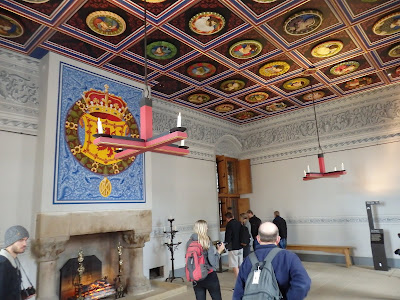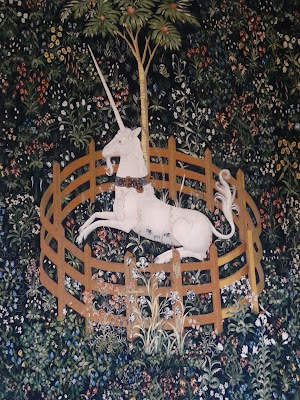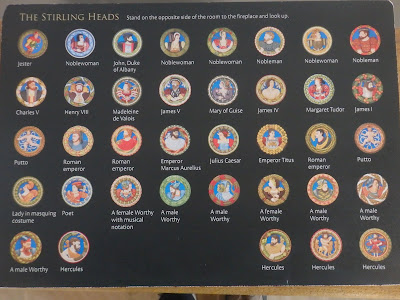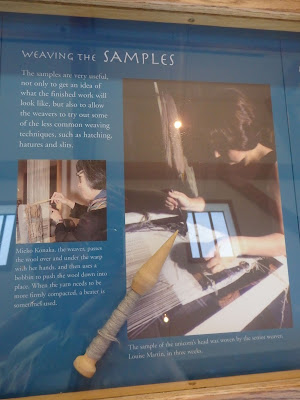 |
| We entered through the first of three defensive walls. |
 |
 |
| The Inner Gate is the second layer of fortification. |
 |
| Upon passing through the forework gatehouse, we entered the Outer Close with the Royal palace (1530's) to the left, |
 |
| the Great Hall (1503) right in front of us, and |
 |
| a gun battery to the right. |
 |
| Along the wall to the right was the main Guard House. |
 |
| Just to the left of the main guard house is the Three Gun Battery. |
 |
| It presently looks out over the Stirling Kirkyard |
 |
| The two statues on top are interesting. |
 |
| The Unicorn represents Scotland |
 |
| And the Lion represents England |
 |
| Next we headed back out to the Inner Close where our next tour would be of the Royal Chapel |
 |
| Of course the statue taking the most prominent place is the one of King James V himself. |
 |
| Back through the Great Hall, we entered a door to the right of the stage. |
 |
| These stairs went up and then over the outside portal between the Outer and Inner Closes then proceeded into the Royal Palace. The Royal Palace has benefited the most from renovation efforts. |
 |
| The Royal Palace is divided in half, one side for the king and one side for the queen, with each containing three rooms. |
 |
| Decorations would have been of the best quality to impress upon visitors that they were among royalty. |
 |
| Another impressive ceiling. |
 |
| Look closely at the tapestries on the wall. There's a museum in the castle dedicated to this recreation of the originals. |
 |
| Close up of the unicorn in captivity. |
 |
| The ceiling. |
 |
| Another one of the tapestries |
 |
| Ceiling |
 |
| There was a section of the castle dedicated more to younger visitors but I found it interesting. |
 |
| Particularly this display showing the many layers of clothing worn by royalty of the Renaissance era. |
 |
| Outside we walked behind the Royal Chapel. |
 |
| From there we could see into the Nether Bailey |
 |
| Only way to get there was to go back to the Outer Close and through the North Gate. |
 |
| The Nether Bailey contained the museum about the recreation of the castle tapestries. Very interesting reading. It took 13 years to weave the tapestries! |
 |
| The tapestries were weaved sideways! |
























































































No comments:
Post a Comment